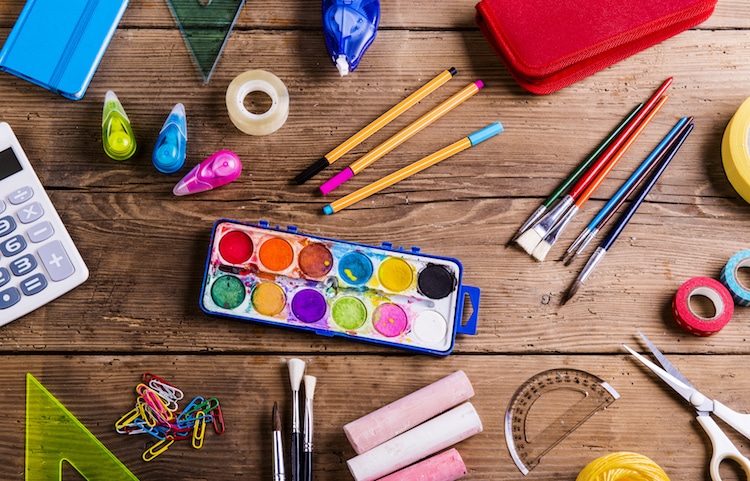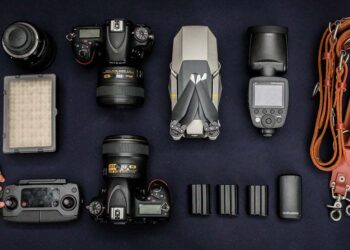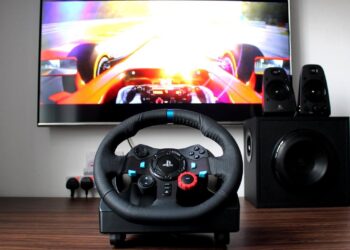For millennia, the act of creation has been deeply intertwined with the tools artists wield. Today, art supplies are not merely materials; they are catalysts for imagination, mediums through which vision takes tangible form. Whether you’re a seasoned professional, an emerging talent, or a curious beginner, understanding and carefully selecting your art supplies is paramount to unlocking creative potential, mastering techniques, and achieving expressive results. The world of art materials is constantly evolving, with innovations in pigments, binders, and tools offering unprecedented possibilities for texture, color, and form. This comprehensive article delves deep into the essential and trending art supplies across various mediums, exploring their unique properties, dissecting their benefits, and offering practical advice to help you build a versatile and inspiring kit tailored to your artistic journey. Get ready to rediscover the joy of creation and truly unleash your inner artist.
Drawing and Sketching Essentials
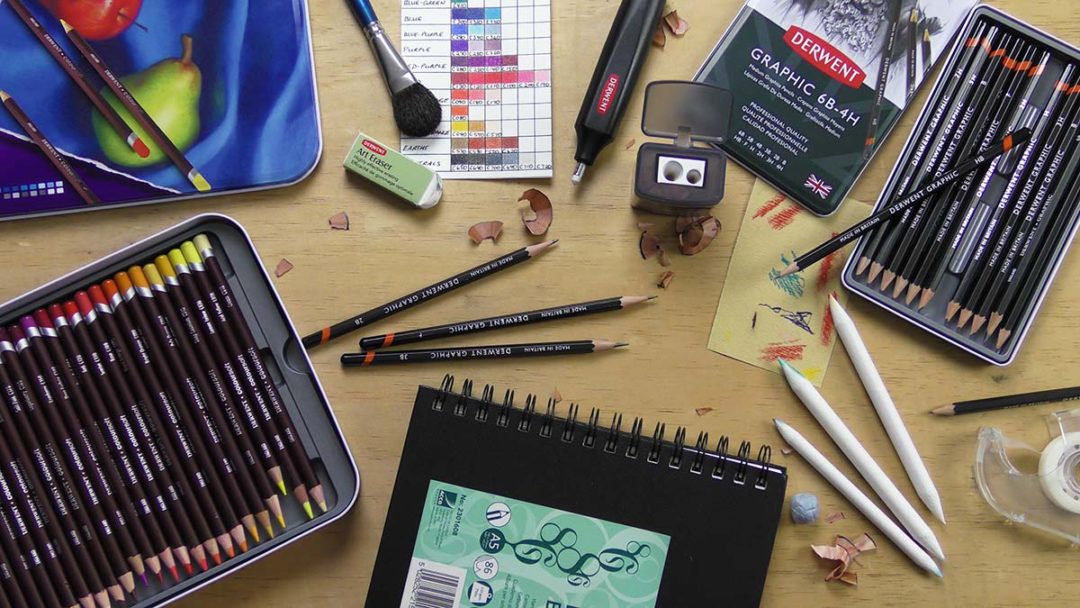
Before color comes line. Drawing and sketching tools are fundamental for capturing ideas, exploring compositions, and refining forms, serving as the backbone of nearly all visual art.
A. Graphite Pencils
Graphite pencils are the most basic yet incredibly versatile drawing tool, offering a wide range of tonal values from delicate light lines to rich, dark marks.
- Hardness Grades: Graphite pencils are graded by hardness, indicated by letters and numbers:
- H (Hard): Lighter marks, hold a sharp point longer, ideal for detailed work, technical drawing, and light sketching. Higher numbers (e.g., 2H, 4H, 6H) indicate increasing hardness and lightness.
- B (Black/Soft): Darker marks, softer lead, good for shading, blending, and expressive lines. Higher numbers (e.g., 2B, 4B, 6B, 8B) indicate increasing softness and darkness.
- HB: A common middle ground, suitable for general sketching and writing.
- F: Fine point, slightly harder than HB.Having a range of grades (e.g., 2H, HB, 2B, 4B, 6B) allows for greater tonal control and expressive variation in your drawings.
- Paper Compatibility: Graphite works well on various paper types, from smooth Bristol board for fine detail to textured drawing paper for rich shading.
- Erasers:
- Kneaded Eraser: Soft, pliable, and absorbent, ideal for lifting graphite without damaging paper or leaving residue. Can be molded into precise points.
- Vinyl/Plastic Eraser: More abrasive, effective for removing dark or stubborn marks.
- Gum Eraser: Crumbly, gentle, good for broad, light erasing without damaging delicate surfaces.
B. Charcoal
Charcoal is beloved for its ability to produce rich, velvety blacks and soft, blendable tones, making it excellent for expressive drawing, life studies, and large-scale work.
- Types of Charcoal:
- Vine Charcoal: Softest, lightest, and easiest to erase, made from burnt grapevines. Ideal for quick sketches and initial layouts.
- Willow Charcoal: Similar to vine but slightly denser, offering a darker mark.
- Compressed Charcoal: Charcoal powder mixed with a binder, formed into sticks or pencils. Comes in various hardnesses, producing much darker and less easily erased marks.
- Charcoal Pencils: Compressed charcoal encased in wood, offering more control and less mess than sticks.
- Blending Tools: Use tortillons (blending stumps), paper towels, or even your fingers to blend charcoal for smooth transitions and tonal gradations.
- Fixative: Charcoal is easily smudged, so a workable fixative spray is essential to prevent smudging and preserve your finished drawings. Apply in light coats in a well-ventilated area.
C. Inks
Inks offer permanence, crisp lines, and the ability to create dynamic washes, making them popular for illustration, calligraphy, and expressive drawing.
- Types of Ink:
- India Ink: Black, permanent, waterproof, and opaque, often made from carbon black. Excellent for linework and strong contrasts.
- Drawing Inks (Acrylic-based): Available in a wide range of colors, often waterproof and lightfast once dry.
- Walnut Ink: A natural, sepia-toned ink, non-waterproof, creating beautiful washes and delicate lines.
- Application Tools:
- Dip Pens and Nibs: Offer precise control and varying line weights depending on the nib.
- Technical Pens: Provide consistent, precise line widths, popular for illustration and architectural drawing.
- Brushes: For dynamic lines, varying widths, and washes (e.g., sumi-e brushes, watercolor brushes).
- Brush Pens: Convenient pens with a flexible brush tip and an integrated ink reservoir.
Painting Mediums
Painting supplies allow artists to explore color theory, texture, and light, bringing vibrancy and depth to their creations.
A. Acrylic Paints
Acrylic paints are incredibly versatile, known for their fast drying time, vibrant colors, and ability to be used on almost any surface.
- Composition: Made from pigment suspended in an acrylic polymer emulsion, they are water-soluble when wet but become water-resistant and flexible when dry.
- Benefits:
- Fast Drying: Allows for quick layering, building up texture, and working quickly.
- Versatility: Can be used thickly like oils or thinned with water or mediums to resemble watercolors. Adhere to a wide range of surfaces (canvas, wood, paper, fabric, plastic).
- Vibrant Colors: Pigments retain their brightness when dry.
- Easy Cleanup: Clean up with soap and water.
- Mediums: Acrylic mediums can alter the paint’s consistency, drying time, sheen, and texture. Examples include:
- Gel Mediums: Increase transparency, body, and extend drying time.
- Fluid Mediums: Thin paint for washes and glazes without losing color intensity.
- Texture Pastes: Add grit, peaks, or other textures.
B. Oil Paints
Oil paints are celebrated for their rich, luminous colors, slow drying time, and exceptional blendability, allowing for seamless transitions and deep layers.
- Composition: Pigments are bound with a drying oil (most commonly linseed oil).
- Benefits:
- Slow Drying Time: Offers extended working time for blending, glazing, and intricate detail.
- Rich Colors: Known for their deep saturation and luminosity.
- Excellent Blendability: Ideal for creating smooth gradations and subtle tonal shifts.
- Durability: Once fully cured, oil paintings are highly durable and long-lasting.
- Solvents and Mediums:
- Turpentine or Mineral Spirits: Used to thin paints, clean brushes, and dissolve dried paint.
- Linseed Oil, Poppy Oil, Walnut Oil: Alter drying time, gloss, and fluidity.
- Galkyd/Liquin: Alkyd-based mediums that speed up drying time.
- Brushes: Oil painting uses a variety of brushes, often hog bristle brushes for impasto and synthetic brushes for smoother applications.
C. Watercolor Paints
Watercolor paints are cherished for their delicate transparency, luminous washes, and ability to create subtle atmospheric effects.
- Composition: Pigments are suspended in a water-soluble binder (usually gum arabic).
- Forms: Available in pans (solid cakes) for convenience and portability, or tubes (liquid paste) for more intense color and larger washes.
- Benefits:
- Transparency: Allows the white of the paper to show through, creating luminosity.
- Layering: Can be layered to build up depth and color intensity.
- Portability: Pans are highly portable for plein air painting.
- Paper: Requires specialized watercolor paper (often 140lb/300gsm or heavier) with varying textures (cold press for texture, hot press for smoothness) to prevent buckling and allow for proper pigment absorption.
- Brushes: Soft brushes (sable, synthetic sable) that hold a lot of water are essential for watercolor techniques.
D. Gouache
Gouache (pronounced “gwash”) is an opaque water-based paint, essentially watercolor with added white pigment or chalk, giving it a matte, velvety finish.
- Opacity: Unlike watercolor, gouache allows for layering opaque colors over darker ones, offering strong coverage.
- Benefits: Dries quickly, re-wettable (can be re-activated), and great for illustration, design work, and blocking in solid colors.
- Application: Can be used thickly for impasto effects or thinned for smoother applications.
Brushes and Tools
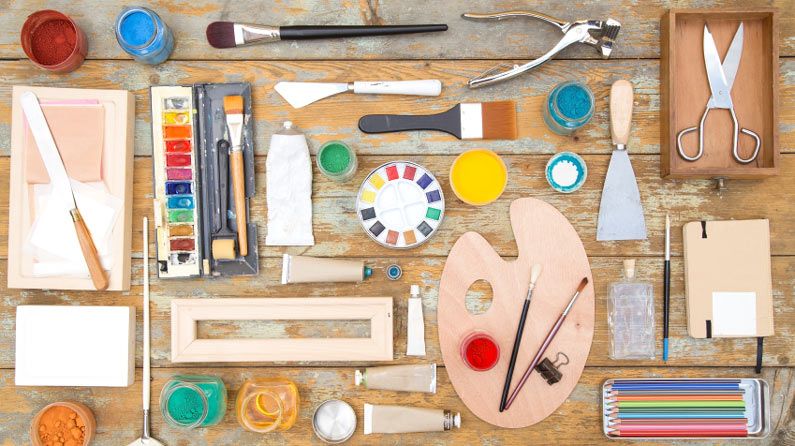
The right brushes and tools are extensions of the artist’s hand, allowing for precise control, expressive marks, and varied textures.
A. Paint Brushes
Paint brushes come in an astounding variety of shapes, sizes, and bristle types, each designed for specific purposes.
- Bristle Types:
- Natural Hair (e.g., Sable, Hog Bristle): Sable brushes (kolinsky, red sable) are prized for watercolors and oils for their ability to hold a fine point and large amounts of paint/water. Hog bristle brushes are stiff and resilient, ideal for oils and acrylics, especially for impasto and texture.
- Synthetic Fibers: Versatile for all paint types, durable, easy to clean, and often more affordable. Mimic the properties of natural hairs.
- Brush Shapes:
- Round: Versatile for lines, details, and washes.
- Flat/Bright: For bold strokes, sharp edges, and impasto.
- Filbert: A flat brush with an oval tip, offering soft edges and blending.
- Fan: Used for blending, softening edges, and creating textures (e.g., foliage).
- Liner/Rigger: Long, thin brushes for very fine lines and details.Having a selection of shapes and sizes is crucial for diverse painting techniques.
B. Palettes
A palette is where colors are mixed.
- Types:
- Wooden Palettes: Traditional for oil painting, absorb excess oil.
- Plastic Palettes: Easy to clean, versatile for all paints.
- Ceramic/Porcelain Palettes: Excellent for watercolors, won’t stain.
- Stay-Wet Palettes: For acrylics, keep paints wet longer.
- Palette Paper Pads: Disposable for quick cleanup.
C. Palette Knives
Palette knives are not just for mixing paint; they are powerful tools for applying paint, creating texture, and scraping excess paint from the canvas.
- Shapes: Come in various shapes and sizes, from thin mixing knives to flexible painting knives with different blades (e.g., trowel, diamond, round).
- Texture: Excellent for creating impasto (thick, textured paint) effects with oils and acrylics.
D. Easels
An easel provides stable support for your canvas or drawing board, allowing for comfortable working posture and optimal viewing angle.
- Studio Easels: Sturdy, often heavy, designed for permanent studio use, can hold large canvases.
- Field/Plein Air Easels: Lightweight, foldable, and portable for painting outdoors. Many integrate a palette or storage.
- Tabletop Easels: Compact, for smaller works on a desk or table.
Surfaces and Preparation
The choice of surface and its preparation significantly impact the final look and longevity of your artwork.
A. Canvas
Canvas is the most traditional surface for oil and acrylic painting, offering a flexible and durable ground.
- Material: Typically made from cotton or linen. Linen is more expensive but stronger and more stable.
- Priming (Gesso): Canvas usually comes pre-primed with gesso, a white acrylic primer that creates a smooth, absorbent surface suitable for paint adhesion and prevents paint from soaking into the fabric. You can also apply additional gesso for a smoother or more absorbent surface.
- Stretched vs. Canvas Panels/Boards:
- Stretched Canvas: Canvas stretched over a wooden frame, providing a traditional painting surface. Available in various depths (gallery wrap, standard).
- Canvas Panels/Boards: Canvas glued onto rigid board, more affordable and compact, ideal for studies or smaller works.
B. Paper
Paper is a versatile and affordable surface for drawing, sketching, watercolor, gouache, and even thinned acrylics.
- Weight (GSM/lb): Paper weight is crucial. Heavier paper (e.g., 140lb/300gsm or more) is more durable and less prone to buckling, especially for wet media like watercolor.
- Texture (Cold Press, Hot Press, Rough):
- Cold Press: Slightly textured surface, popular for watercolor and drawing, as it holds pigment well.
- Hot Press: Smooth surface, ideal for fine detail, ink, and smooth washes.
- Rough: Heavily textured, for expressive washes and granular effects.
- Sketchbooks/Pads: Available in various sizes and paper types for portable sketching and studies.
C. Panels and Other Surfaces
- Wood Panels: Smooth, rigid surfaces (e.g., birch, hardboard) are excellent for oils, acrylics, and mixed media. They offer great stability and can be sanded to a very smooth finish. Require priming.
- Mixed Media Paper: Designed to handle a combination of wet and dry media without buckling or bleeding.
- Bristol Board: Smooth, rigid paper ideal for ink, marker, and fine graphite work.
Accessories and Cleanup
Beyond the core supplies, various accessories enhance the artistic process, and proper cleanup ensures tool longevity and artist safety.
A. Easel Accessories
- Brush Holders: Keep brushes organized and accessible.
- Solvent Holders/Brush Washers: Secure containers for cleaning brushes with solvents.
- Palette Holders: Attach palettes directly to the easel for convenience.
B. Cleaning Supplies
- Brush Cleaners: Specialized soaps (e.g., Master’s Brush Cleaner) for cleaning oil and acrylic brushes, removing paint residue and conditioning bristles.
- Paper Towels/Rags: Essential for wiping brushes, blotting excess water, and cleaning up spills.
- Water Containers: Multiple containers for rinsing brushes (one for initial rinse, one for cleaner water).
- Disposal of Solvents/Paints: Properly dispose of soiled solvents and paint waste according to local regulations to protect the environment. Never pour down the drain.
C. Storage and Organization
- Brush Rolls/Cases: Keep brushes protected and organized when traveling or storing.
- Paint Storage Boxes: Organize paint tubes by color or medium to keep your workspace tidy.
- Flat Files/Portfolios: For storing finished drawings and prints flat to prevent damage.
- Art Bins/Drawers: For organizing miscellaneous supplies like pencils, charcoal, and pastels.
D. Safety and Health
- Ventilation: Work in a well-ventilated area, especially when using solvents, sprays (fixatives), or certain pigments. Consider an air purifier.
- Gloves: Wear disposable gloves (nitrile) when working with toxic pigments, solvents, or for easy cleanup.
- Barrier Cream: Apply barrier cream to hands to protect skin from pigments and solvents.
- Avoid Ingestion: Never eat, drink, or smoke while working with art materials. Wash hands thoroughly afterwards.
- Material Safety Data Sheets (MSDS): Familiarize yourself with the MSDS for any potentially hazardous materials you use, understanding their risks and proper handling.
Digital Art Supplies
The digital realm has opened up a new dimension for artistic creation, offering powerful tools that mimic traditional mediums and introduce entirely new possibilities.
A. Graphics Tablets/Drawing Displays
- Pressure Sensitivity: Graphics tablets (e.g., Wacom Intuos, Huion, XP-Pen) allow you to draw and paint digitally with a stylus, mimicking traditional tools. They detect pressure sensitivity, allowing for varied line weight and opacity, just like a real brush or pencil.
- Drawing Displays: Drawing displays (e.g., Wacom Cintiq, Apple iPad Pro with Apple Pencil, Microsoft Surface Studio) allow you to draw directly on the screen, providing a more intuitive and immersive experience.
- Software Integration: These devices integrate seamlessly with professional digital art software.
B. Digital Art Software
- Adobe Photoshop/Illustrator: Industry standards for digital painting, photo manipulation, and vector graphics.
- Clip Studio Paint: Popular for comics, manga, and illustration, known for its powerful brush engine and line-art capabilities.
- Procreate (iPad): A powerful and intuitive app for digital painting and sketching on iPad.
- Corel Painter: Known for its realistic simulation of traditional brushes and media.
- Krita/GIMP (Free): Excellent free and open-source alternatives for drawing and painting.
C. Portable Devices
- iPads/Android Tablets: Modern tablets, especially with powerful styluses (e.g., Apple Pencil), have become incredibly capable digital sketchbooks and mobile art studios, allowing artists to create anywhere.
- Laptop/Portable Workstations: High-performance laptops designed for creative work enable artists to take their entire digital studio on the go.
Conclusion
The realm of art supplies is a vibrant tapestry of tools, colors, and textures, each offering a unique pathway to artistic expression. From the humble graphite pencil that lays the first line to the rich pigments of oil paints that bring a canvas to life, and the boundless possibilities of digital brushes, these materials are integral to the creative process.
By thoughtfully curating your kit, understanding the properties of each medium, and committing to continuous learning, you empower your craft, allowing your unique vision to unfold. Remember, the supplies are merely the means; the true art lies in your hands, your heart, and your imagination. So, embrace the journey, experiment boldly, and let your rediscovered art supplies be your companions on the infinite canvas of creation.

